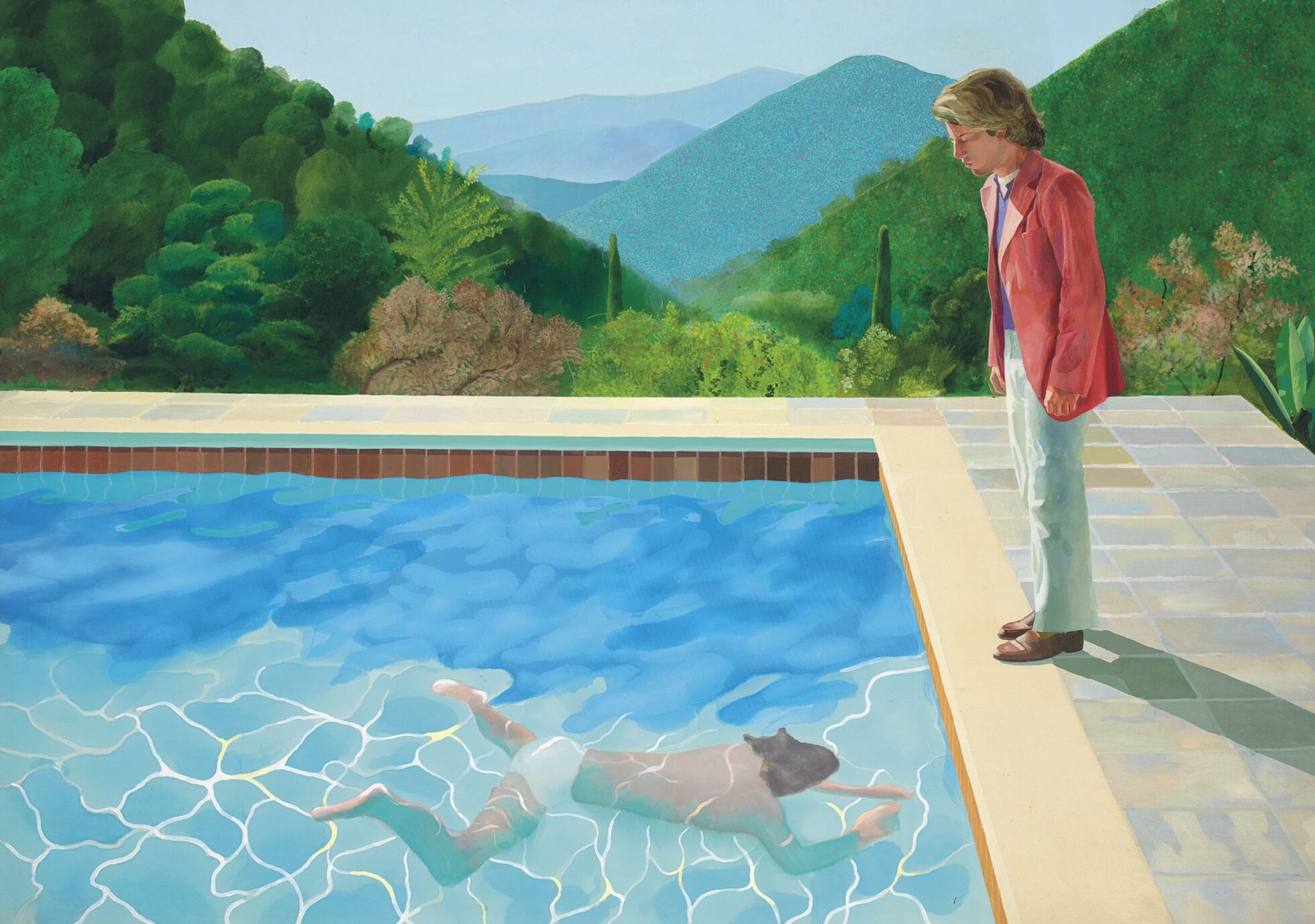Behind a painting, there is often a love story.
“The work I’m in love with actually represents the end of a love story. It was February 1971, and David Hockney (Bradford, 1937) had organized a trip to Marrakech with his great love, Peter Schlesinger, his student in California, with whom the painter had completely fallen head over heels.
Their relationship, intense and beautiful, was nearing its end: one evening at sunset, David saw Peter looking out toward the horizon from the balcony of the La Mamounia hotel, and suddenly felt him distant and ephemeral. So he did the only thing he could to hold on to him: he captured that memory in a series of photographs, which he later transferred onto canvas, building a cage of light and shadow, as if to trap him and keep him from slipping away.
Last December, I visited Marrakech, and one evening, as I was walking through the gardens of La Mamounia, I passed by those same green railings: for a moment, I thought I saw Peter looking at the sunset, and David behind him, watching the sunset of their love.”
It was 1966 when Hockney met the eighteen-year-old Peter Schlesinger, his student at UCLA. He was Hockney’s first love and his greatest muse for the next five years. At the time, Hockney had already achieved a fair amount of success. Every trip they took, to London, Paris, Rome, Marrakech, became the backdrop of their romantic idyll and of Hockney’s representations.
The painting Sur la Terrasse marks a pivotal turning point in both the personal and professional life of the artist. The canvas was begun in March 1971 and completed over the summer, when his relationship with Peter Schlesinger came to an end. The tenderness and nostalgia of this moment are unmistakable.
Schlesinger is portrayed with his back turned to the artist, gazing out over the lush gardens beyond the terrace of the Hôtel La Mamounia in Marrakech. Full of romanticism, Sur la Terrasse represents the last time Schlesinger would appear in Hockney’s work. It is based on a series of photographs taken during their February trip.
Positioning himself beyond the frame, like a voyeur, Hockney stages a private farewell to his lover, suggested through the open French doors, drawing the gaze toward new, unknown places.
It is a deeply moving portrait of estrangement, whose themes would later reappear in his iconic 1972 painting Portrait of an Artist (Pool with Two Figures).
Over more than 60 years of career, David Hockney has used a variety of media to portray his subjects, always with a deep focus on translating emotion onto the canvas. He is considered one of the leading figures of 1960s Pop Art and among the most influential British artists of the 20th century.
Biography
ELENA ZACCARELLI | An expert in 20th-century Italian art, she specializes in the appraisal and acquisition of Italian and international artworks, traveling between Christie’s offices and overseeing the major auctions of Modern and Post-War art. She holds a degree in Modern Literature with a specialization in Art History from the Alma Mater Studiorum – University of Bologna. For the past ten years, she has worked at Christie’s Italy, where she has held various roles and is currently a Specialist in Modern & Contemporary Art.
